The January transfer window has always been a difficult one. Good players only move in the middle of the season for crazy amounts of money and the players who are available for lower fees are usually risky choices.
Because of the pandemic, La Liga clubs have spent almost no money in the winter transfer window. Most clubs have decided to keep their squads and either use academy players or wait for the summer to make their movements as the financial situation is not the best for them.
But some clubs have tried to find undervalued players in the market who can change their seasons to the better without paying huge fees. In this tactical analysis, we’ll take a look at five of these signings that may have gone under the radar for most fans but could potentially impact their new teams in the second half of the season.
Augusto Solari – Racing Club to Celta
Augusto Solari is a 29-year-old Argentinian right-winger or wing-back who has spent his career in Argentina so far, playing for the likes of River Plate, Estudiantes de la Plata and Racing Club. He had a great 2018/19 season, scoring five and assisting three goals in 20 matches, but at the beginning of the 2019/20 season, he ruptured his ACL and spent more than nine months off the pitch, coming back in September 2020.
Eduardo Coudet, the new Celta coach, was the coach under whom Solari performed at his best level with 14 goal contributions in 45 matches. Celta has rejoined both paying Racing Club €500,000 and signing Solari on a 2.5 years contract. He has already made his debut at his new club and the coach trusts him to revert the bad situation they’re in.
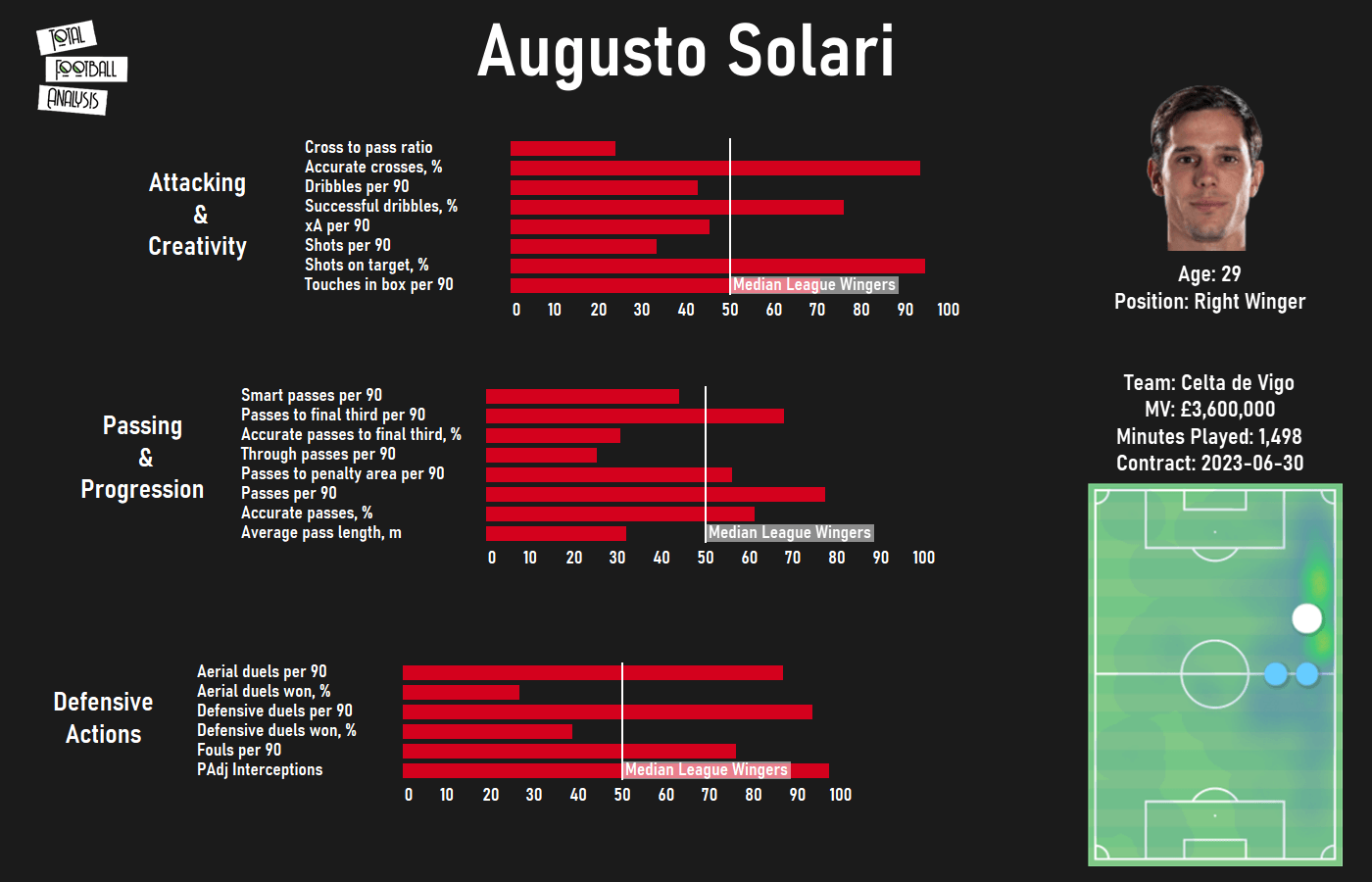
In the profile above, we can see Solari’s profile from the 2018/19 season, the last one in which he had significant minutes. This is the version of Solari Celta expect to get by signing him now after he has recovered from his injury and the one we have considered in this tactical analysis.
Solari is a right-footed right-winger who’s physically small (176 cm / 5’9’’) but well-built and quite fast but not explosive or lightning-fast. He’s capable of making long efforts, works very hard in every phase of the game and possesses fantastic stamina to cover the whole wing.
On the ball, Solari is technically solid and reliable. He can play short passes very accurately even under pressure and prefers to go forward with off-the-ball runs rather than with progressive passes or dribbles because he’s not especially creative. He doesn’t only run hugging the touchline and can also make underlapping runs and get into the box, adapting very well to his teammates’ positions. He reads the game well, moving the ball quickly into less crowded areas and helping his team move forward.
Solari does have the pace and ability to dribble in situations in which he has the advantage, completing a good percentage of the dribbles he tries. His crossing from the wings is very good and his work rate enables him to get into the box, from where he usually shots on target and gets some goals.
In defence, Solari’s hard work is more appreciable and he gets involved in lots of defensive actions both on the ground and in the air. He’s not a defender by nature but still wins a fair amount of defensive duels so he can be used as a wing-back. His positioning, sense of responsibility and work rate translate into lots of interceptions and recoveries as he always tries to be in a good defensive position instead of staying up and waiting for a counter-attack.
Solari isn’t a spectacular player but he’s someone who can be trusted to work hard and make good decisions. His work rate and understanding of spaces will give players like Iago Aspas better conditions to shine, liberating them from defensive duties and also getting the ball to them quickly and efficiently. Coudet knows Solari very well and is expected to bring the best out of him in a new and more demanding context for the Argentinian winger.
Denis Vavro – Lazio to Huesca
Denis Vavro is a 24-year-old Slovakian centre-back who started his career at Zilina in his home country. He was signed by Copenhague in 2017 and his performances in the Danish league attracted interest from Lazio, who bought him for more than 10 million euros in 2019. In his 18 months in Italy, he has only featured in 12 Serie A games (only one start).
Vavro has signed for Huesca on a loan deal until the summer. Huesca sit in the last position of the table but are only three points away from Osasuna who are 17th, so they still have options to stay in La Liga. They only had three centre-backs in their squad until the arrival of Vavro and he’s expected to show again the level that attracted so many clubs back in 2019.
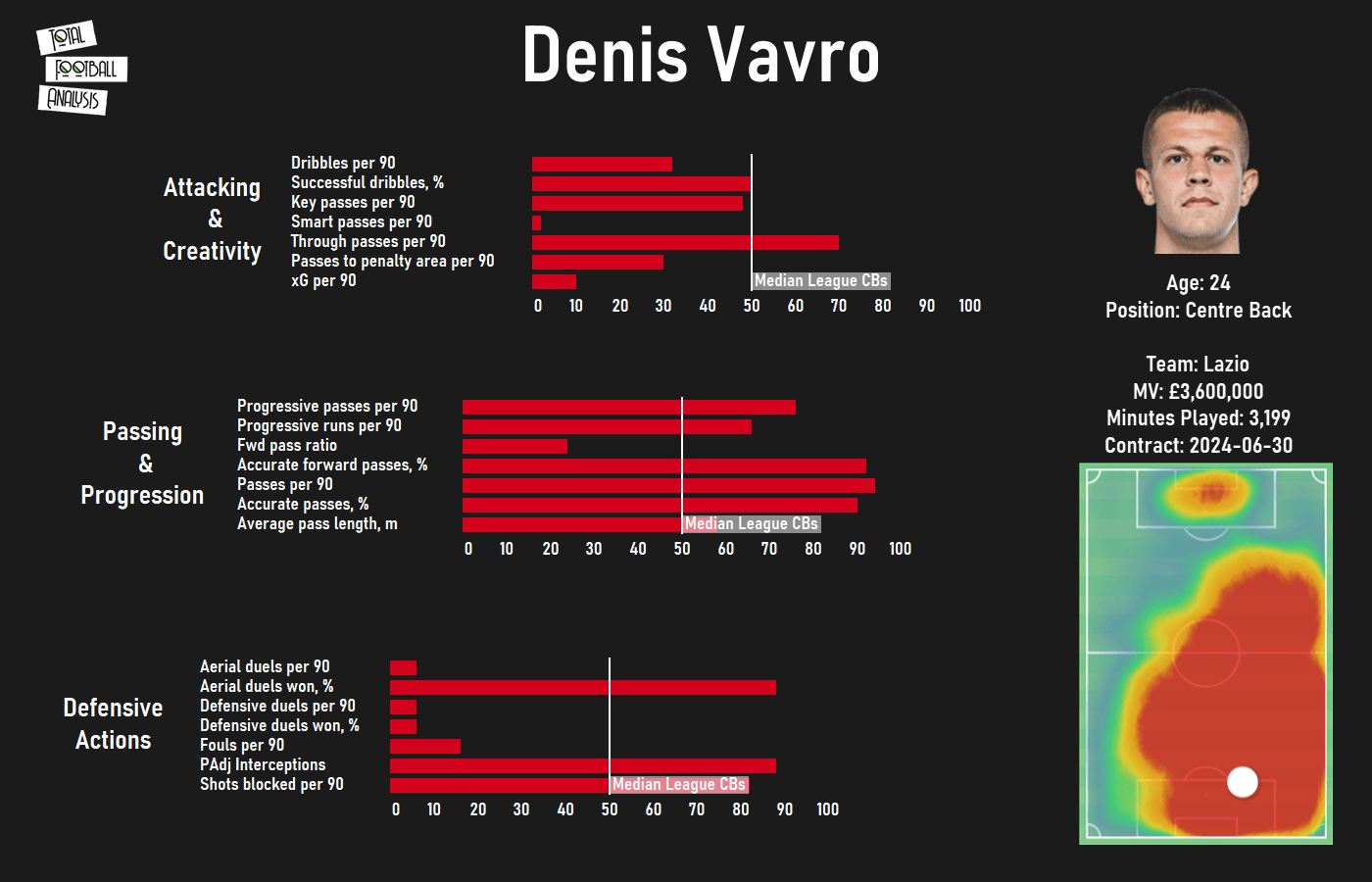
Above, we can see Vavro’s profile from his last season at Copenhague. Like in Solari’s case, this is the version of Vavro Huesca expect to get to boost their chances of staying in La Liga and also help the Slovakian centre-back to re-launch his career. This tactical analysis also looks at how he has adapted to a higher level of football.
Vavro is a right-footed, physically imposing centre-back. He stands at 189 cm / 6’2’’ and is good in the air and when he can use his body to push rivals off the ball and feels comfortable defending deep and inside the box. He struggles when defending against quick rivals or with space behind him because his mobility is quite poor so that’s something Huesca will need to keep in mind when using him. His pace in longer distances is ok but he’s too slow in the first couple of meters and finds it difficult to recover once he’s been dribbled.
As we can see in his heatmap, Vavro was ever-present at Copenhague. Playing in a dominating team meant Vavro could get the ball lots of times in every match and he has some quality to play progressive passes or use his power to run with the ball and establish his team in the opposition half. However, he has only shown that in leagues in which he was rarely pressed and he felt very confident but once he has transitioned to a more demanding league, some technical issues have shown up and he doesn’t seem as good on the ball as his stats in Denmark could suggest.
On the defensive side, Vavro uses his size to win aerial duels and will be a good addition if Huesca want to defend inside the box and absorb crosses but again, he was much better in the air playing in Denmark than he has been in Italy (he dropped success rate in aerial duels from 63.8% in the Danish Superliga to just 50% in the Serie A). He’s very limited in one-on-one situations and struggles to turn and win the ball back when facing rivals with some dribbling ability. It’s also noteworthy he doesn’t seem to have shown any improvement over the last few years as he won 71.4% of his defensive duels in the 2017/18 season, 58.8% in the 2018/19 season (both in Denmark) and just 50% in his two seasons in the Serie A.
Vavro is a very risky signing for Huesca. He looked like a potentially great centre-back some seasons ago but he hasn’t developed and hasn’t had an impact at a higher level at all. If Huesca can revive his career and get a similar player than the one who excelled in Denmark, then they’ll get an interesting defender. But if not, Vavro can be a huge liability at the back and increase their relegation chances.
Domingos Quina – Watford to Granada
Domingos Quina is a 21-year-old Portuguese midfielder who was in England for most of his youth career, playing for Chelsea and West Ham. He played six matches for West Ham but none of them in the Premier League before signing for Watford in 2018. In his first two seasons in Watford, Quina only played 12 Premier League games (only three stats) but this season in the Championship he has enjoyed more playing time, starting eight games and coming from the bench in six more.
Granada have seen some potential in the Portuguese midfielder and have taken him on loan until the end of the season, expecting him to explode and show all his talent in the second half of the season. Quina was part of the Portuguese European champions U17 and U19 teams.
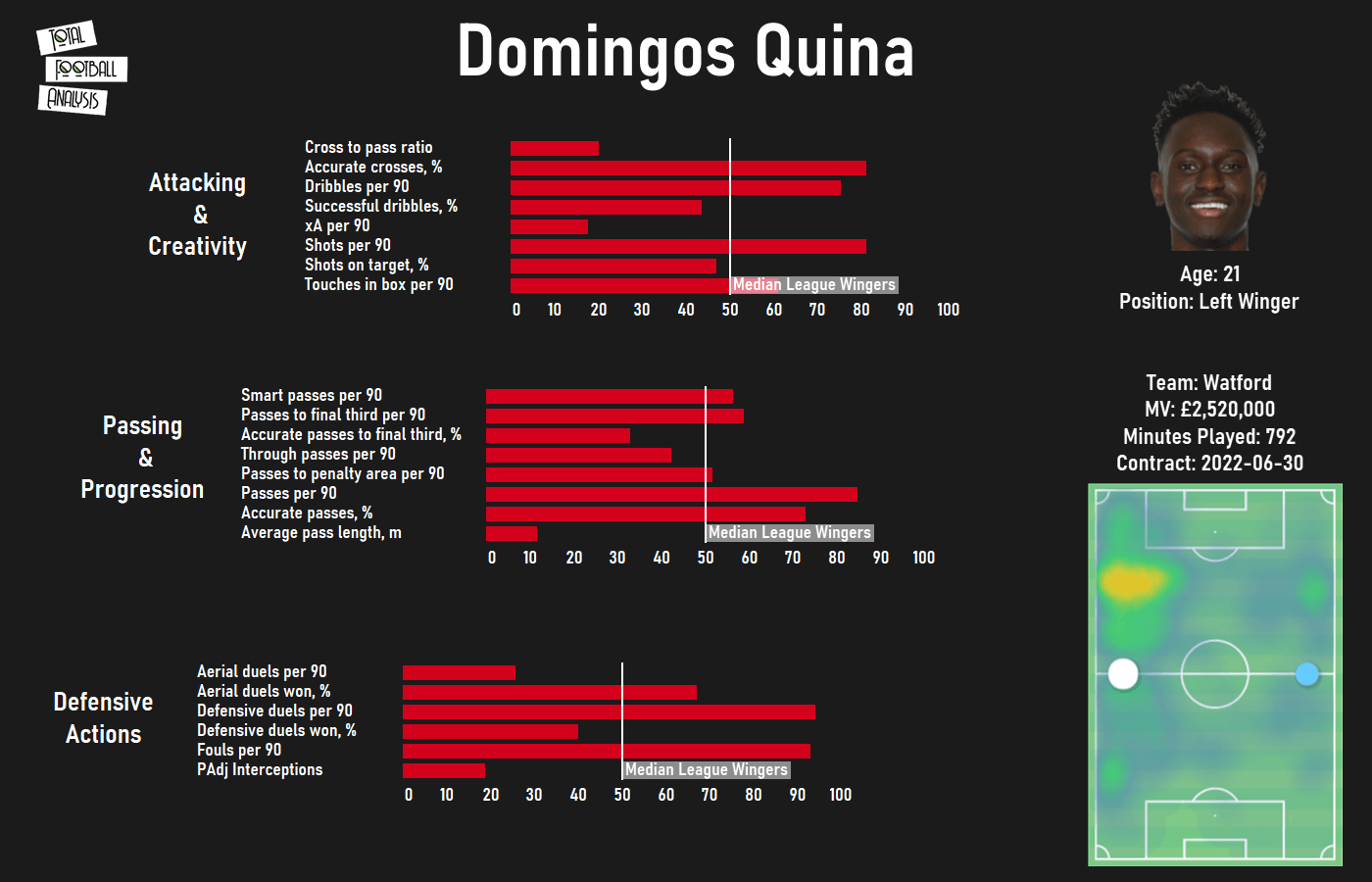
The profile above corresponds to this season in the Championship. Quina has been used mostly on the wings even if he’s naturally a central midfielder and has adapted quite well and proven he’s capable of playing in several positions and tactics.
Quina is right-footed and stands at 177 cm / 5’10’’ but is physically strong and has powerful lower limbs. He can protect the ball using his body and combines good mobility with a relatively low centre of gravity to turn and move in short spaces.
On the ball, Quina starts from the wings but tends to come inside and appear in central positions or the half-spaces as it’s a more natural zone for him. By doing this, he gets the ball more than other wingers and is a good distributor who can progress the ball into the final third. He has a very powerful shot and likes to try his luck often both from distance or getting into the box. He has good technique and passing range, feeling comfortable in tight spaces and being capable of some quality details under pressure.
In terms of doing the classic winger’s work, Quina doesn’t stand out. He attempts lots of dribbles but it isn’t his main strength and doesn’t complete many of them. Because of this and his tendency to drift inside, he doesn’t cross the ball a lot even if he’s quite good when he does. He’s a central midfielder used as a wing midfielder and that translates into his playing style and performances.
Very involved in defence, he works hard to help his team recover the ball as he would do if he was a central midfielder. He wins a fair amount of defensive duels (54.4%) and just by getting involved in them, he slows down and difficulties the rivals’ attacks. He may lack some aggression but makes up for it with his quickness to tackle and get the ball back. Despite not being tall, he’s decent in the air, winning 41.2% of his duels, which is quite good compared to other wingers in the league.
Even if he’s moving to a higher level of football with his step from the Championship to La Liga, Quina will surely benefit from playing in Spain. He has the technical ability and work rate to adapt quickly and will be more comfortable in a less physical football. It will be interesting to see how Granada fit him into their tactics but probably he can come back to his natural central position and contribute to Granada’s great season so far with his quality.
Francisco Ferro – Benfica to Valencia
Francisco Ferro is a 23-year-old Portuguese defender who came through the academy at Benfica, playing 91 games for their B team and 65 for the first team. He also represented Portugal at every youth level from U17 to U21 and was called for the senior national team but didn’t make his debut.
He was regarded as one of the hottest prospects in the world alongside his teammate Rúben Dias but this season he has lost his starting position and will look to relaunch his career at Valencia, who have taken him on loan until the end of the season alongside Patrick Cutrone and Christian Oliva.
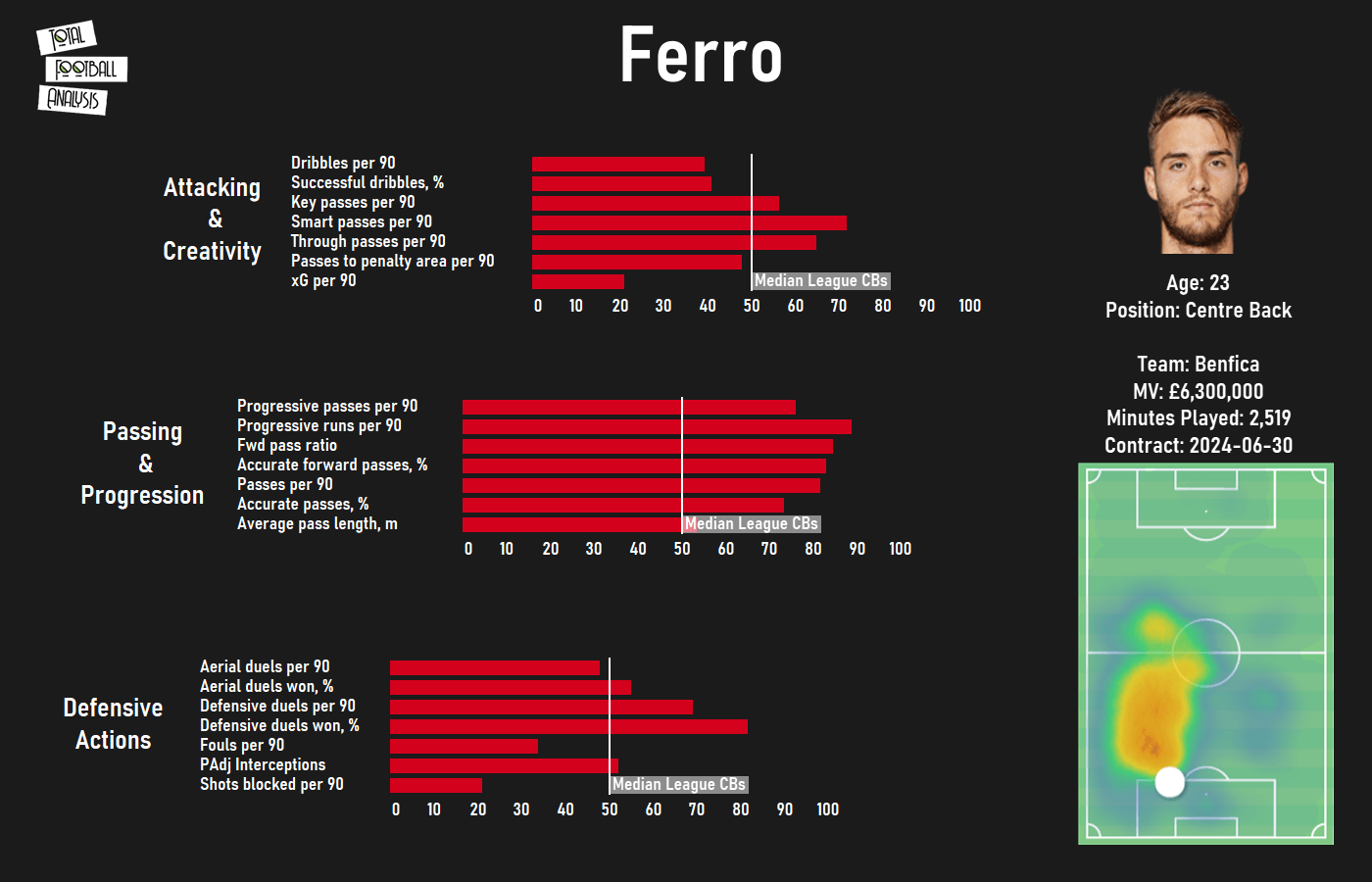
Considering he lost his position at Benfica to Otamendi and Vertonghen at the start of the season, we used Ferro’s stats from the 2019/20 season to create the profile above. Last season, he played as a left centre-back, leaving the right side to Rúben Dias, alongside whom he has played over 100 matches in his career. We have focused on that time period for this scout report.
Ferro is a right-footed centre-back who can play on both sides of a back-four even if he’s been mostly used on the left. Standing at 191 cm / 6’3’’, Ferro is a very physical and strong centre-back who can easily win duels. His mobility and pace are just ok in short distances because of his size but once he starts running, Ferro reaches a good top speed and can recover after being dribbled.
Playing for Benfica meant Ferro was on the dominating side most of the games as we can see in his high number of passes per compared to other centre-backs in the league. However, he was still a player who looked to play forward most of the time, progressing the ball very efficiently and creating dangerous plays from the back.
Ferro is technically very sound and has a good passing range with both feet. He stays calm under pressure and doesn’t rush to clear the ball away under pressure. He likes to take risks and use his power to drive the ball forward and get into the opposition half.
In defence, Ferro uses his height to his benefit in the air, winning over 60% of his headers. He could still improve in the air but it isn’t a weak spot at all. He marks his rivals very tightly and uses his strength to prevent them from controlling the ball and recovering the ball high up the pitch. Hus’ physicality allows him to win over 70% of his defensive duels even if he defends far from his goal and with lots of spaces behind him.
Signing Ferro on loan is a smart move by Valencia. He lost his position at Benfica to two highly experienced and elite centre-backs like Otamendi and Vertonghen but he’s still the centre-back who didn’t look out of place playing alongside Rúben Dias and aged 23 is reaching his peak years so he should perform from the first minute in La Liga. Having another Portuguese-speaking centre-back alongside him like Gabriel Paulista is an extra positive that will surely help in his adaptation.
Facundo Pellistri – Manchester United to Alavés
Facundo Pellistri is a 19-year-old Uruguayan winger who started his career at Peñarol, playing 37 games before signing for Man United last summer for more than 8 million euros. Since he arrived in England, Pellistri has only featured for the Red Devils’ U23 side, playing eight games in which he scored three goals and assisted another one.
Alavés have taken the young wonderkid on a loan deal until the end of the season hoping he can adapt quickly to La Liga. The language and playing style will surely help and Alavés have a great record of taking players on loan and increasing their value in a very short period as they did with Marcos Llorente, Theo Hernández, Olivier Burke, Alfonso Pedraza or Munir El Haddadi.
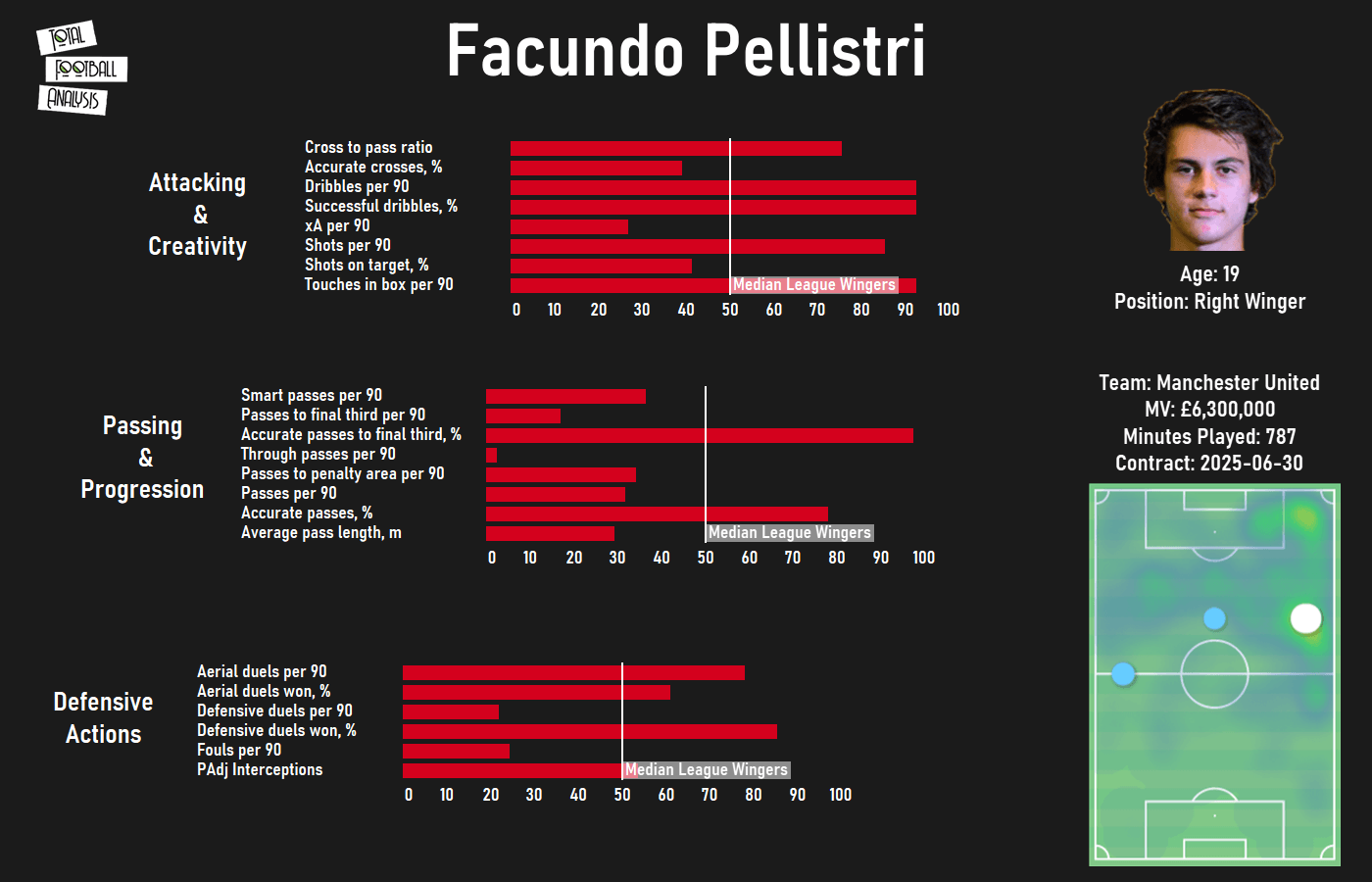
Above we can see Pellistri’s profile from the 2019/20 season with Peñarol in the Uruguayan first division. He was mostly used in the right-wing but he can play in any position in the second line.
Pellistri is a right-footed winger or attacking midfielder with a small frame (175 cm / 5’9’’) but with great acceleration and agility. He stops and changes directions very easily and uses that to his advantage when dribbling. He also uses his body well to protect the ball and to get him between the rivals and the ball and recover possession.
Gifted with excellent technical qualities, Pellistri plays very quickly in tight spaces, being capable of advancing with quick combinations or electric dribbles between several players. His pace over longer distances is also good and he can drive the ball forward through the middle and lead counterattacks. He detects holes in the defensive line very quickly and gets into the box very often both with and without the ball. He likes to move on the blind side of the defenders and his runs in behind are difficult to spot.
He seems to be working on his movements to get into scoring positions and he has increased his scoring output a lot this season compared to the last one, improving his xG per 90 from 0.25 to 0.41. Surprisingly, this increase came with fewer shots per 90, which shows a good evolution regarding the location of his shots and his decision-making. If he can translate this into first-team football then Alavés will be getting a very interesting player.
On the defensive side, Pellistri uses his body well but still lacks the work rate to cover the whole wing. He’s still a teenager and is developing his physicality and stamina to compete in a league as demanding as the EPL.
Pellistri is a smart move for Alavés. They get a player who’s obviously talented and developing quickly, and if they can continue that development and give him opportunities then the little Uruguayan will surely respond with goals and assists. Given he’s under 21 years old, Alavés would also get part of any future transfer thanks to FIFA’s solidarity mechanism, so it could also become a great move from a financial point of view.
Conclusion
Obviously, all these transfers are risky ones. Finding a safe choice without spending money is an almost impossible task and probably none of the transfers we have mentioned is regarded as the perfect choices for any of the clubs involved but as good options given the available possibilities.
Other transfers in La Liga could have been on this list as Étienne Capoué to Villarreal, Carles Aleñá and Take Kubo to Getafe, Aleix García to Eibar or Johan Mojica to Elche. Making the right decision in the middle of the season can change any team’s expectations and the five players in this analysis are expected to increase the chances of their teams to achieve their goals this season.
All player profiles in this piece were created by the wonderful Sathish Prasad (@SathishPrasadVT on Twitter). Go check out his stuff!

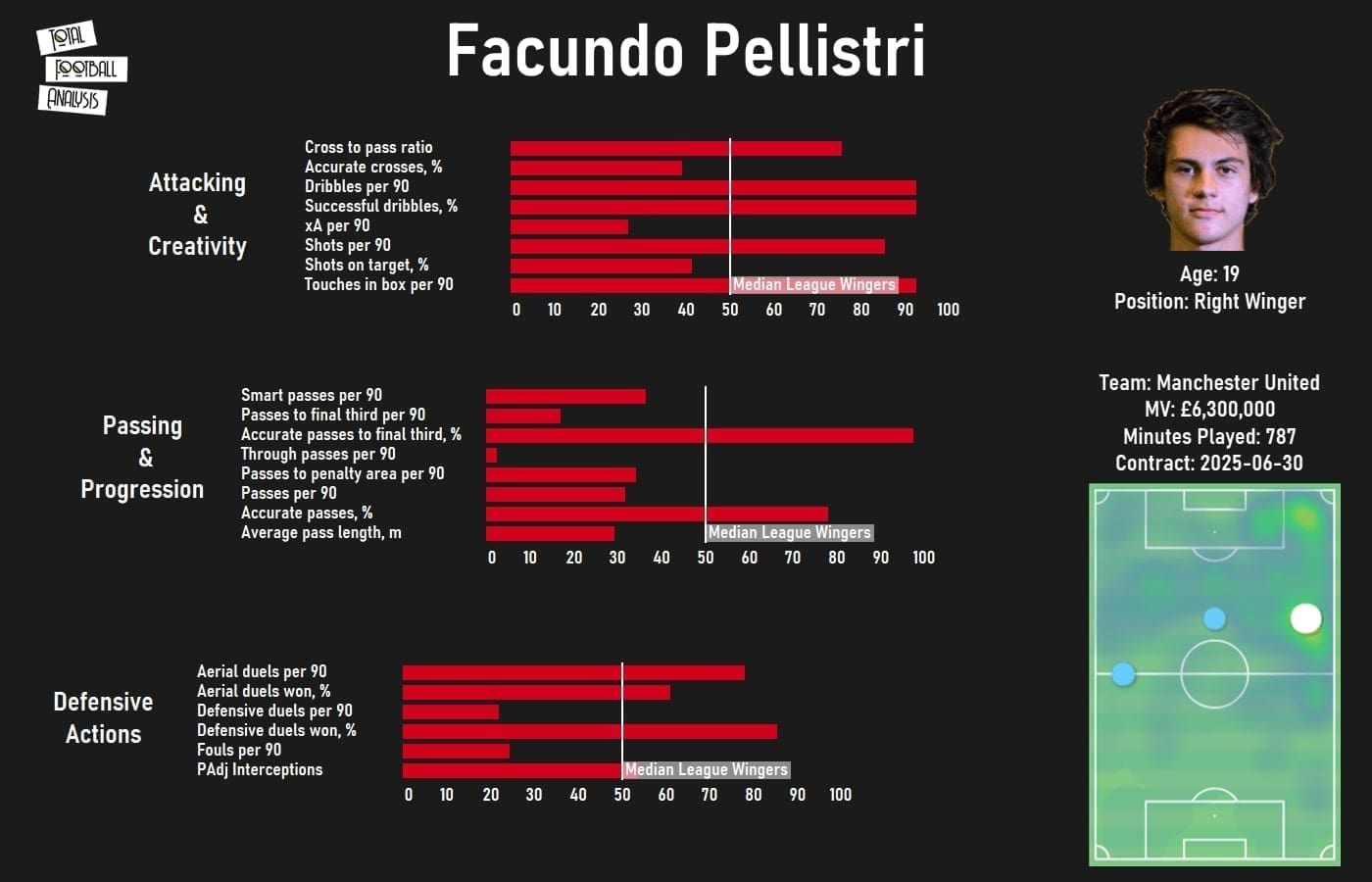



Comments